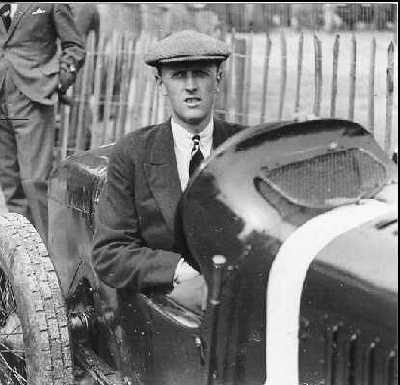 |
 |
|
| Henry O'Neal de Hane Segrave | Golden Arrow |
The Golden Arrow Story
The attempts on the world land speed record captured huge public interest during the 20s and 30s before the development of organised motor racing. It involved measuring the average speed of two runs over a measured mile within a 60 minute period. Early records were set on the long, flat sands of Southport (near Liverpool, UK) and Pendine in South Wales.
The two main protagonists during this period both represented England, Malcolm Campbell in his "Bluebird" and the American-born aristocrat Major Henry O'Neal de Hane Segrave in his Sunbeam. They took it in turns to beat each others record in a rivalry which started in Pendine and reached its climax on the 20 miles of compact sand between Daytona and Ormonde in Florida, USA.
By 1928 Campbell had pushed the record to 206 mph in "Bluebird" after a hair raising drive along the beach in bad conditions. This was broken within two months by an American juggernaut, the "Triplex Special", consisting of three 27 litre aero engines fitted on a truck chassis and driven by Ray Keech at 207 mph.
Now it was Segraves' turn. A new car would be designed by a leading auto-engineer Capt.J.S.Irving, powered by a 900 bhp 23.9 litre Napier Lion 12-cylinder aero engine and encased in a revolutionary streamlined aluminium body. The body was to be created by one of England's leading coachbuilders, Thrupp and Maberly Ltd. The car was ready by 1929 and although technically the "Irving-Napier Special" became universally known by its more evocative name of "Golden Arrow".
The name was an allusion to the arrowhead configuration of the engine and the colour of the coachwork. Slab sides contained cooling surfaces and were filled with ice. A telescopic sight on the bonnet would allow Segrave to aim the car at the winning post.
 |
 |
|
| Henry O'Neal de Hane Segrave | Golden Arrow |
The attempt on the record took place on Daytona Beach in front of a vast crowd on March 11th, 1929. After a single practice run Segrave broke the record with ease at an average speed of 231.44 mph.
On his return to England he was knighted for his achievements but almost immediately transferred his interest to breaking the world water speed record and was killed soon afterwards on Lake Windermere when his boat hit a log. "Golden Arrow" was retired and can now be seen in the National Motor Museum at Beaulieu, the Hampshire home of Lord Montagu. In its entire life it never travelled more than 30 miles under its own power.
Malcolm Campbell, knighted in 1931, went on to break the land speed record and water speed records several times before his death in 1948. His son Donald was later killed attempting to break the water speed record on Lake Coniston, only a few miles from the site of the death of Sir Malcolm's great rival.